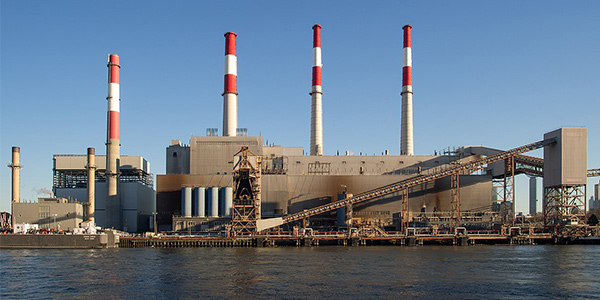LS Power subsidiary Ravenswood Generating, which runs the largest power plant in New York City, announced on Thursday that it will change its name to Rise Light & Power and expand to develop large-scale clean energy projects.
The company will continue to operate the 2,480-MW Ravenswood Generating Station, the steam energy power plant in service since 1963 on the East River waterfront in Queens. The plant represents over 20% of installed capacity in NYISO’s Zone J.
The company’s first new large-scale project is the Catskills Renewable Connector, a 1,200-MW submarine and underground transmission line to connect its site in New York City with Greene County on the western side of the Hudson River and just south of the capital region.
“We’ll be able to unlock shut-in wind and solar across upstate that previously hasn’t been able to reach customers in New York City,” Rise Light & Power CEO Clint Plummer told RTO Insider. “Obviously it’s got to be done in locations where there’s community support for development, and we think there’s a lot of that.”
The state the previous day issued a solicitation for transmission projects to bring renewable energy from upstate and Canada to New York City as part of Tier 4 of its Clean Energy Standard, with planners hoping the transmission “arteries” will feed a 250-mile, $2 billion green “superhighway” project. (See “Other Projects,” NY Awards 2.5-GW Offshore Deal to Equinor.)
The company has filed a NYISO interconnection request (No. 1120) but has not yet committed to a path for financing and regulatory approval of its new transmission line.
Roads to Reality
“We think there are a number of different ways we could get the revenue support that we need,” Plummer said.
New York has quickened its permitting processes for both renewable siting and so-called priority transmission projects. Does Plummer think the company can get this new project under construction faster than the 10 years typically needed?
“Possibly, and I say possibly because some transmission lines have taken a long time, others take less time,” he said. “For any type of big infrastructure project, it needs to be planned in close coordination with the communities, and we need to be engaging and listening to the thoughts and concerns of those communities and developing routes that work best for them. New York has a very efficient process for evaluating and granting permits to large-scale transmission projects under Article VII, [the state law governing project siting], but that same process also allows for a great deal of stakeholder input, and that’s a good thing.”
The company also has potential to redevelop Ravenswood’s 28-acre site without adversely affecting the existing generation, Plummer said. Since acquiring the plant in 2017, LS Power has invested more than $160 million in modernization and resiliency upgrades for the facilities and removed more than 300 MW of fossil-fired peakers from service.
The state’s Public Service Commission in 2019 approved construction of a 316-MW battery storage facility in three phases on the site. The first phase was scheduled to come online this year, but the company on Tuesday filed a request to extend the Phase I completion date from April 2021 to June 2024 (19-E-0122). (See “Largest Storage Project in New York,” NYPSC Projects Lower Winter Energy Prices.)
The PSC on Sept. 17 modified dynamic load management implementation plans for the state’s six investor-owned utilities, all related to storage, saying the initial plans “resulted in a bias towards short-term, low-capital investment solutions” because of their yearly performance structure (18-E-0130). (See NY Utilities, Developers Tweak Storage Procurement Terms.)
The commission’s December 2018 storage order required Consolidated Edison to procure at least 300 MW of storage capacity and each of the other utilities to procure at least 10 MW each, with assets to be operational by Dec. 31, 2022, on contracts up to seven years.
“While LS Power has an impressive track record developing merchant energy storage in California, the New York market does not currently support that kind of development, so the economic viability of this storage project depends upon us obtaining a contract with a customer like Con Edison or NYSERDA,” Plummer said. “We participated in Con Edison’s 2019 solicitation, and at the end of this past year we found out that we lost.”
Con Edison will run another solicitation in 2021 and Plummer said his company looks forward to participating and hopes to win.
Plummer served on the planning team at Deepwater Wind that developed the Block Island offshore wind farm and takes hope from that experience.
“We proposed the project in 2008, and it took us until 2016 until it was built, and of that eight-year period, six of it was getting all the permits, approvals and public support in place,” he said.


